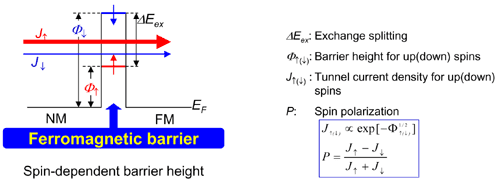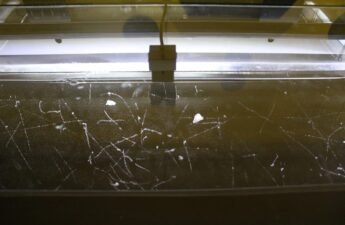This post will bring an introduction to spintronics. While electronics manipulate the electrons’ movement, spintronics is the engineering field that manipulates the movement and spin of electrons. The electron spin can assume two values: spin-up (anticlockwise) and spin-down (clockwise).

Why spintronics?
Spintronics have some advantages over electronics like:
- No need for electrical current to keep the spin, memory can be saved without energy;
- To control spin is needed less energy than control current, therefore, the power consumption is reduced;
- Great reduction on heat emission;
- Greater processing speed with magnetic reprogrammable processors;
- Extension of Moore’s law with smaller components.
Qubits
Qubits are the information unit in spintronics, is the abbreviation of “quantic bits”. In this field, qubit represents the rotation spin direction.

It is not possible to determine the exact spin value because the spin is a quantum property, therefore it is subjected to Heisenberg’s Uncertainty Principle. Qubit is a bit superposition, that is, can have two values with different probabilities.
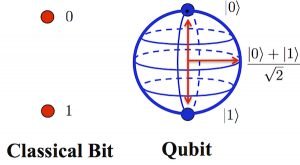
Giant magnetoresistence (GMR)
One application of spintronics uses the giant magnetoresistance effect. Consist of two thin layers of ferromagnetic material separated by a thin paramagnetic layer, the layers are submitted to an electrical current.

Electrons pass by the layers, when the electron spin direction is parallel to the magnetic field there is low resistance, however, when the direction spin is the opposite of the layer’s magnetic field, the electron is scattered and the layer’s resistance is high. The GMR is used in hard disk drivers for data reading.
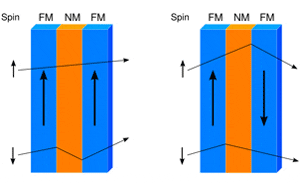
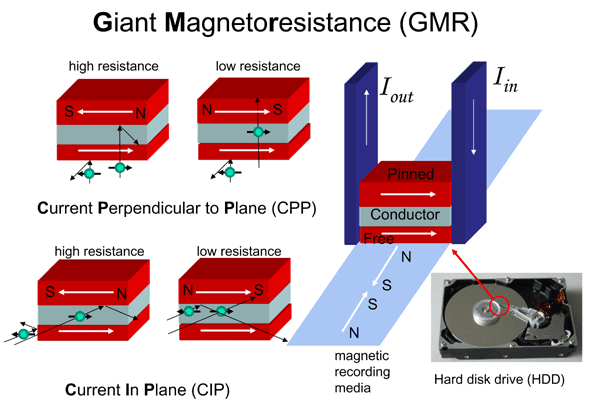
The GMR spin sensor is called a spin valve, which also has an antiferromagnetic material layer.
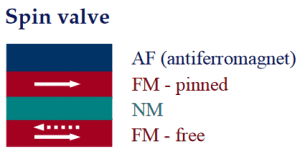
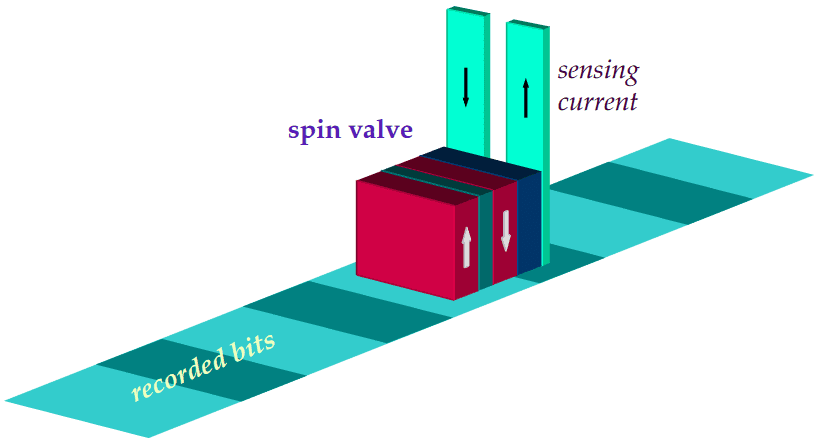
GMR model:
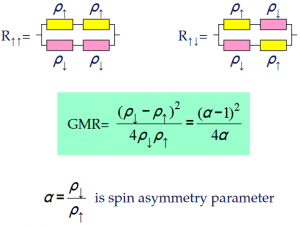
Tunnel magnetoresistence (TMR)
Now we have two ferromagnetic layers separated by a very thin insulating layer. The perpendicular electrical resistance of the layers depends on the ferromagnetics layers’ field direction. Electrons in the opposite spin direction won’t be tunneled, by that, won’t pass by the layer. When more aligned with the layer’s magnetic field, greater the probability of tunneling.

Spin filter
It is possible to build a spin filter with only one ferromagnetic layer with a magnetic field, in this way, electrons with parallel spin direction or close to parallel will have a greater probability to pass through the layer than other electrons with a different spin.
